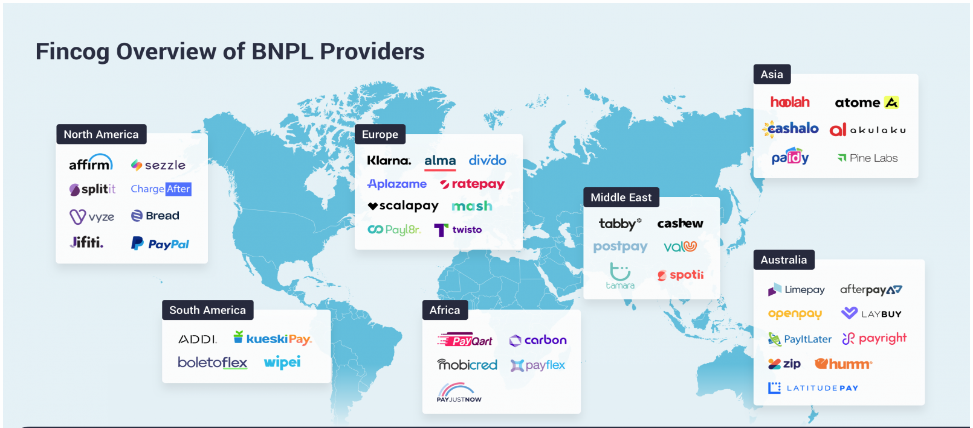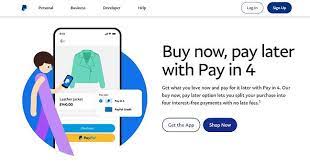Buy Now, Pay Later (BNPL) service provider Klarna is taking the market by storm despite regulatory concerns and growing competition. Klarna has overtaken its competitors and established itself as the leading BNPL provider, and not just in their home market Sweden.
Data presented by the HelpCenter app reveals that Klarna is currently the most popular Pay Later technology in the market, offered by 53% of websites on the entire internet. This is higher than its competitors Afterpay, Sezzle, ZipPay and Affirm combined, with a total share of 39%.
Out of all websites offering Klarna as a payment method, 34% are from Germany and 31% from the US. Home market Sweden accounts for 12% while the UK comes fourth with 8% share. The data on BNPL service and country distribution is provided by the internet technology profiler BuiltWith.

Main drivers behind Klarna’s success
The pandemic-induced rise in online shopping seems to have had an immense impact on Klarna’s growth. The benefits of Pay Later services to consumers are obvious. Klarna offers a no-interest ‘Pay in 4’ installment plan to allow shoppers to split their payments, which have to be paid within 30 days of purchase.
The volume of payments processed by Klarna in the US jumped by a whopping 296% in the fourth quarter. The CEO of Klarna, Sebastian Siemiatkowski, suggested that as younger generations in the US, Millennials and Gen-Z, rely more on debit than credit cards, it is a major opportunity for no-interest credit providers like Klarna.
Additionally, Klarna’s success can be attributed to their marketing tactics. Klarna has established themselves in the market as a shopping service rather than a credit provider. As traditional banks have struggled with innovation, Klarna has disrupted the retail banking and credit card industry by giving equal opportunity to both customers as well as retailers.
Klarna recently even launched their own shopping app that caters to younger generations who shop more online and are willing to spend more on the latest trends, providing they have the option to pay in installments, according to research.
Additionally, Klarna announced their partnership with online payments processor Stripe, allowing easy integration for retailers in Europe, US and UK to add Klarna as a payment button on their webshop checkout. Contributing directly to the growth in the European, UK and US regions.
Germany and the US most penetrated regions
Pay Later services are attracting consumers worldwide. Data presented by the HelpCenter app found that a total of 43% of websites that offer BNPL service come from the US, and a total of 16% come from Germany, corresponding to Klarna’s most penetrated regions.
Interestingly, Australia comes third with a 12% share and 2% from New Zealand, likely driven by Klarna’s competitor, Afterpay. Both Sweden and the UK are holding a 6% share. While this makes sense for Sweden, a high share of websites using BNPL in the UK, as one of the largest consumer economies in the world, indicates they may be experiencing above-average growth.

Growing regulatory concerns as BNPL popularity is increasing
Buy Now, Pay Later is a compelling proposition that benefits consumers, retailers, as well as BNPL service providers. Klarna earns fees from retailers, retailers benefit from higher sales. Klarna revealed that customers of retailers offering BNPL spend 68% more than the average order value.
Naturally, this has grown interest and concerns from regulators and consumer groups about the potential risks. A recent survey revealed that 36% of Gen-Z used BNPL in 2021, a six-fold growth since 2019. Critics argue that younger people are especially vulnerable, and that offering such easy credit without properly assessing their creditworthiness can lead to a potential debt.
This is why several new regulations are starting to come into place. In its home market Sweden, Klarna is regulated as a bank, but new regulations have come to place specific for retailers. Since 2020, it has been illegal for businesses to offer BNPL options before other payment methods.
Additionally, Klarna has had to change their marketing tactics. In December, the UK's Advertising Authority banned some Klarna’s advertisements, citing they encourage credit use to improve people’s mood, leading to impulsive shopping.
What is more, as UK shoppers exceed £4 billion in debt on Buy Now, Pay Later deals, new government guidance has come into place. After these recent developments, Klarna has announced a number of changes, including stronger credit checks.
At the same time, Klarna has argued traditional credit card companies are worse. Whereas banks accrue high-interest rates over time, Klarna offers small credits. If payments aren’t made on time consecutive times, customer accounts will be deactivated.
With e-commerce and online consumption at their all-time high, it seems like nothing can stop Klarna from expanding. However, new regulations, growing consumer debt, credit issues, and an oversaturated market can make it harder for them to operate and scale.




